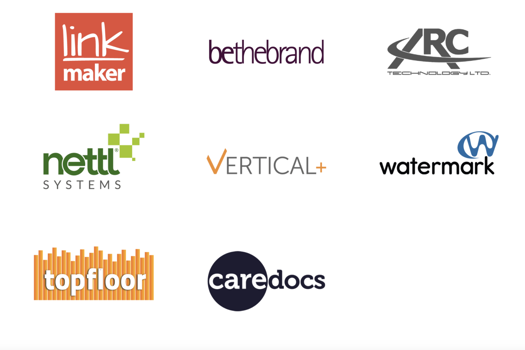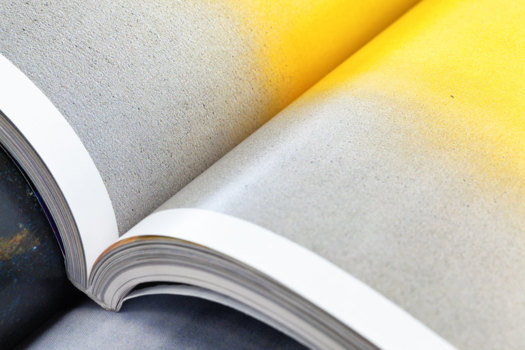In the post-war world of hybrid pressrooms, where the inky battle lines between litho and digital have been smudged into obscurity and both sit happily alongside each other with transition between run-length borders free and easy, some confusion remains as to how much fraternising with the former enemy there should be.
This is most apparent in the post-press world. The mantra here from both sides appears to still be the rather divisive ‘digital finishing kit for digital presses and litho finishing kit for litho presses’, which is not really in the spirit of co-operation. Worse still, if followed, printers are left staring at two bits of kit doing essentially the same thing, be it cutting, folding, laminating or any other process. In the current economic state of "gamely struggling on" that duality seems a tad indulgent, if not foolish. The question, though, is whether the indulgence is a necessary one and if dual finishing set-ups are the only option, or if, actually, it is possible to just pick one machine that handles both litho and digital work.
Duplo says that, for the most part, printers moving into digital from litho tend to assume the latter scenario is plausible and quickly discover that assumption was wrong. Marketing manager Andy Pike reports that the majority of the manufacturer’s recent sales of the DC 645 slitter-cutter-creaser have been to litho printers that moved into digital and mistakenly thought a press was the limit of the investment they needed to make.
"They buy a digital press and they think that’s all they need to do because they already have litho finishing kit," he explains. "However, we have found that companies quickly realise they need bespoke digital kit because with digital you can get things like image movement and static and you need creasing to prevent cracking – so the litho kit isn’t up to the job."
While you’d expect a manufacturer of digital finishing kit to further as much as it could the notion of litho not being up to digital jobs, according to printers this is, in some cases, a correct assessment. Kevin MacGowan, a director at Horner Brothers, explains that with digital, because you are taking a lot of moisture out of the substrate, if you don’t score before you fold, it will crack. For that reason, he has to have specialist digital finishing kit, rather than relying on litho folders that do not score the work.
Special applications
Aaron Archer, technical director at Pureprint Group, adds that finishing kit used for litho work also lacks the functionality needed for digital work.
"If you’re involved in variable data work or cross media, you need advanced functionality that is beyond most litho kit," he says. "Things like variable perfect binding with bar code integrity and cover-to-text-block checking or variable extent bar code checking on personalised booklets – you are just not going to get that capability on litho finishing kit."
It’s not just in these digital nuances where traditional finishing kit finds itself lacking, according to printers. Just as much of a hindrance is the issue of makeready. The finishing kit a litho printer will already have in place will be geared to longer run lengths, not the multiple short-run jobs that are the staple of digital print, and hence the makeready times are far too slow.
"One of the big barriers for putting digital jobs on litho machines is the makeready time," explains Archer. "If you are doing multiple small jobs, the makeready for these litho machines is far too long for you to turn the work around quick enough. You’ve got larger pieces of kit more akin to running long-run work and they have come on leaps and bounds in terms of makeready time, but setting up a digital finishing bookletmaker would take less than five minutes whereas a litho stitcher will take a lot longer."
Duplo’s Pike agrees, adding that if an A4 job came in at 12.05 and an A5 job at 12.07, to change that booklet over on a litho finishing machine would take a lot of time out, whereas with digital bookletmakers that change can take just seconds through the scanning of a barcode.
John Gilmore, managing director of Autobond, admits for some finishing processes this is a problem, but he says the quirk of the laminators his company produces is that makeready is the same whatever you are finishing, and so they run equally well on litho or digital work. That said, some digital stocks can cause concerns.
"We’re aiming for both markets," he explains. "We have a specific digital machine with our Mini 35, but most of our customers use our laminators for both digital and litho work. The only issue comes with output from the Kodak NexPress as there is too much silicone in the ink which makes it very difficult to stick to, though we can still manage it. Apart from that, we can finish work from either technology as easily and as quickly as the other."
Faster turnaround
For those new to the digital sector, this emphasis may seem a lot of fuss over nothing – if it takes a bit longer, so what? It’s better than making a substantial investment to essentially mirror the process. However, this is to underestimate the reality of digital work. For digital, turnaround time is paramount, you often don’t even get the breathing space of a day to produce the work and in many cases you are talking same-day delivery. With web-to-print feeding digital presses, jobs stack up quickly and so you need a finishing option that will deal with the orders quickly and easily to make that deadline.
"The problem a lot of printers are finding is the turnarounds are expected to be extremely fast for digital, so they don’t have the time buffer they did to complete work," explains Karen Lawrence, professional print solutions marketing manager at Ricoh UK. "This is particularly a problem for litho printers that used to outsource finishing. What we are starting to see is that inline digital finishing is coming into play as the solution to the problem as it gives the printer efficiencies of time."
She adds that inline is a better option than near-line digital finishing options because "as soon as you have manual intervention, you are taking up time and time is money. So for every manual intervention you are eating into your profits."
Pureprint Group’s Archer agrees that for digital work the turnaround needs to be quick, but he says this does not automatically mean an inline solution is the right answer. Instead, he believes it comes down to the operational layout and requirements of your business.
"It is down to your operational layout, your customer requirements and your service levels – you have to take all those factors into consideration," he explains. "We put down multiple near-line digital-specific devices all in close proximity to the digital machines for 24/6 shifts. This means we can move work quickly between the various finishing systems and so produce high-quality products within the time frame required."
In essence, Pureprint has, in Archer’s words, a "factory within a factory", choosing to keep all the elements separate for maximum efficiency, but as he says, inline options or using litho kit for certain jobs may be more appropriate for other businesses. There is no one right answer or combination of options.
Lawrence does counter, however, that another consideration has to be staff utilisation and that, here, inline has the massive advantage of not needing skilled operators, instead just requiring the push of a button. Duplo’s Pike says that near line is just as good as it is equally "green button". Both agree that with litho, you don’t tend to have this level of automation.
However, with Autobond’s laminators and many other machines used for litho work, you do now have a great deal of automation. Also, Archer argues that for the digital finishing kit you still need skilled staff, it’s just that those staff are working on more machines.
"We have dedicated digital finishing staff skilled across multiple devices," he explains. "In large litho departments, you tend to have staff highly skilled only on one or two pieces of equipment. Our digital guys are skilled on seven."
It seems, then, that the case for having separate digital finishing kit to your litho post-press kit is far from clear-cut and it’s made more murky by the fact that, for certain applications, printers are regularly using a single machine for both litho and digital work.
One application is cutting and Rollem managing director Stuart Murphy explains that, in this area, the kit has not had to be adapted at all to meet digital requirements, yet it is still perfect for the job.
"We have been around 80 years so digital obviously wasn’t part of our make-up," he explains. "When digital started rearing its head for real, we did consider putting a low-volume machine into the market to cater for those digital customers. For various reasons we didn’t, and what we’ve found since is that digital has grown up and is getting into higher volumes – it has fitted itself to our machines rather than us fitting ourselves to them."
He explains that, though digital jobs are generally made up of variable data, the finished size is generally the same – so set business card, photobook or leaflet sizes. The Rollem machines can automatically switch between two or three sizes so the makeready is not an issue.
Horner Brothers’ MacGowan runs three Rollem machines and he says they are perfect for his business card printing, regardless of the print technology.
"We have three Rollem machines to accommodate the variety of sizes we offer and on all three I can run both litho and digital. It doesn’t really differentiate," he reveals.
Pike says the Duplo’s Duetto Bookletmaker is also a hybrid option for those printers not wanting to double up on finishing kit. It has a digital sheetfeeder at one end, a collator in the middle and then the bookletmaker. If you are doing variable jobs, you use the digital feeder, if litho, you use the collator. "It’s a perfect halfway house," says Pike.
There’s clearly scope for and availability of hybrid options, therefore, but the experts say a completely merged post-press room for digital and litho printers is never going to be plausible. To get a machine for every finishing process that is capable of finishing a run of one as well as a run of 100,000 to the same quality, affordably, and efficiently, would be just impossible.
That’s not to say hybrid options should be ruled out altogether, though. In future, it should not be an "either/or" situation. Those believing the digital salesman that they need a full fleet of digital finishing kit should stop and consider their options, while those at the other pole refusing to duplicate a single process for the digital work, should also realise that certain processes simply have to be done on digital-specific kit. As Ricoh’s Lawrence says: "It’s not a question of litho or digital, its all down to the type of work."
Horner Brothers
Horner Brothers was established in 1982 and is based on three sites across South Yorkshire. It offers a number of print services, including marketing material and personalised stationery printing. It runs both digital and litho print technologies.
Director Kevin MacGowan explains that for some of its services, it is possible to combine both digital and litho work on a single finishing machine. This is mostly possible for business card work.
"For business cards, you tend to have set sizes, though some customers have bespoke-sized business cards, or what I call bastard-sized cards," he explains.
Horner Brothers will print these cards on either its litho or digital presses, depending on the run length, but when it comes to finishing, the destination is the same: its Rollem cutting machines.
"We have three Rollem machines to accommodate the variety of sizes," says MacGowan. "On all three I can run both litho and digital."
The company employs separate finishing machines for litho and digital work for other processes, such as folding. MacGowan says it is all about assessing your options and your services, so you have the right solution for your business.
"If you buy a digital press and the salesman tries to sell you all the digital finishing kit to go with it, you have to stop a moment to think what applications can be combined – cutting is one of those," he says.









